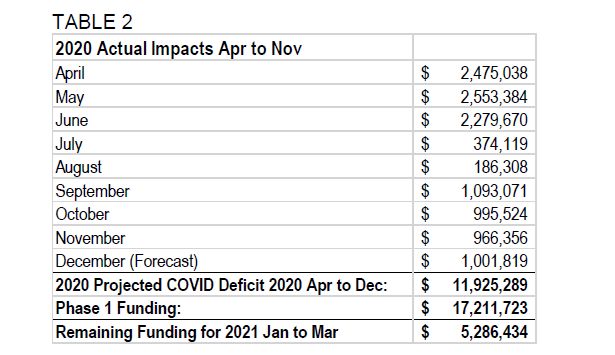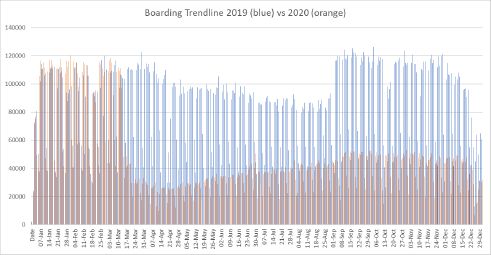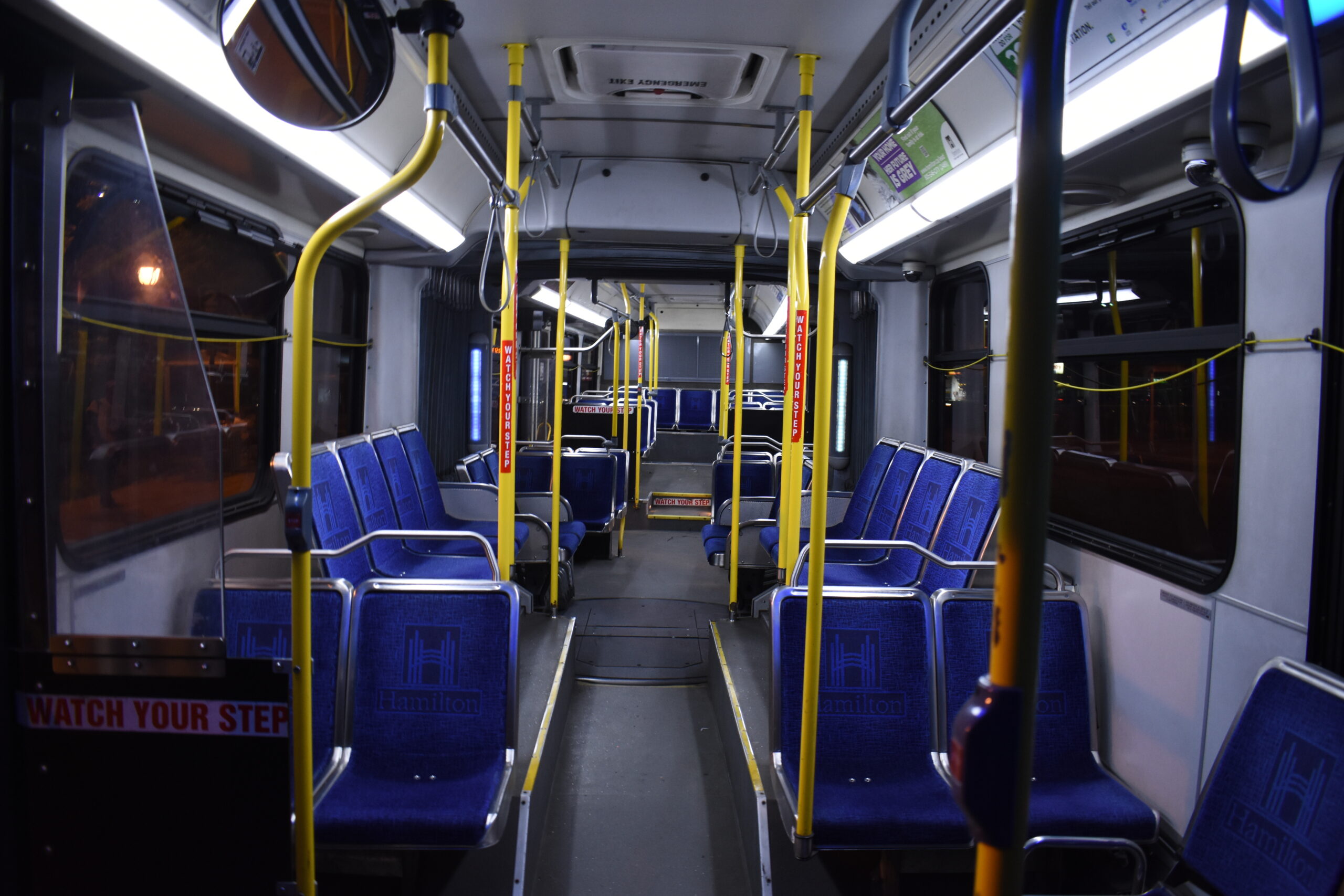The Province of Ontario announced today that it will continue funding the COVID deficits of local public transit systems beyond March 31st.
$16,822,206 in new funding is being provided to Hamilton’s public transit agency, the Hamilton Street Railway. The HSR received $17,211,723 in funding for April 2020 to March 2021.
The HSR lost nearly $12-million during the final nine months of 2020 due to COVID, with over half of those losses during the first three months of the pandemic.
The HSR was not collecting fares during the first three months as it adopted rear door boarding until the installation of barriers to protect bus operators from potential COVID exposure.
The system stabilized into a new “COVID normal” in the Fall of 2020, with COVID deficits averaging around $1-million per month.

2021 Projections
The HSR reported $5,286,434 remaining in COVID transit funds entering 2021.
Therefore, the HSR’s COVID deficit funding for 2021 is now $22,108,640
In mid-January, the HSR provided a projected 2021 total year loss of $20.3-million – $1.7-million per month.
This figure is much higher than the fall monthly average. This deficit represents a near doubling in monthly losses.
Revenue increased by over $205,000 per month* in January as McMaster students resumed paying UPass fees. McMaster students did not pay UPass fees in the fall. Brock, Mohawk, and Redeemer students will not pay UPass fees until in-person learning resumes.
Scenarios
Using the HSR’s $1.7-million per month revenue loss figure, this COVID funding will expire in February 2022.
If monthly deficits remain the same as in Fall 2020, the funding will last until November 2022.
The HSR deficits for January and February are likely higher than in Fall 2020.
Hamilton was placed into “lockdown” on December 21, 2020. Thus, ridership and fare revenue decreased before fall 2020 levels.
Mid-Range Scenario
Transit ridership is traditionally lower in January and February pre-COVID.
It is reasonable to guess the HSR lost between $1.25 to $1.5-million in each of these months.
Deficit: $2.75-million
We should consider a lockdown in April a likely possibility. Thus, we will continue projecting an HSR deficit of $1.25 to $1.5-million for March and April.
Cumulative Deficit: $5.5-million
Things begin to reopen in May. However, with variants likely to be dominant in the community, transit usage remains low. Add $1.25-million to the deficit. For June and July, we will continue to use $1.25-million as the monthly loss.
Cumulative Deficit: $9.25-million.
August sees the resumption of outdoor activities, people begin to make trips into the office bi-weekly, and ridership increases to 55% of pre-COVID levels.
From this point forward, let’s assume $1-million per month for the remaining $12.85-million.
In this scenario, funding will last until September 2022.
Funding Will Last Until Feb 2022, Likely September 2022

In conclusion, our scenarios show this latest round of funding will sustain the HSR beyond COVID into Fall 2022.
Transit ridership will remain below pre-COVID levels as people continue working from home, in-person events are cancelled, post-secondary schools remain closed, and high school classes are partially online.
In Fall of 2020, HSR ridership was at approximately 40% of pre-COVID levels.
In September 2021, we can reasonably expect many in-person activities to resume and for schools to be nearly fully reopened.
Over the year which will follow, ridership will increase as more reopens and our comfort with being around strangers increases as well.
New patterns will become clear, and planning can begin for what public transit looks like post-COVID for implementation in September 2022
Endnote on McMaster UPass Fee Calculation
The $205,000 per month figure is an underestimation.
All full-time McMaster undergraduates pay $59.62 for a January to August HSR pass.
McMaster reported 27,213 full-time undergraduates in November 2018, the last figures available. It does not account for higher enrolment. McMaster’s September 2020 intake was the largest first-year class in the university’s history.
Therefore, I used 27,500 for enrolment.
Monthly = (Enrolment * Fee) / (Months) = 27500 * 59.62 / 8 = 204,943.75

